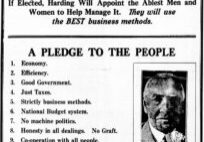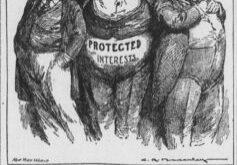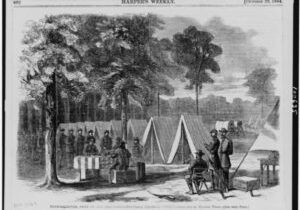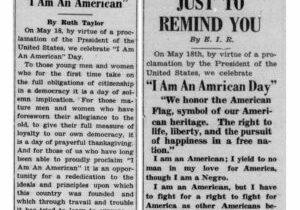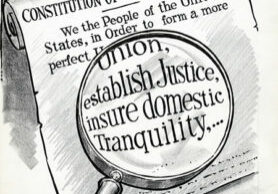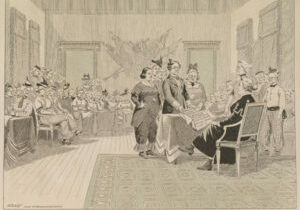Lesson Plans
Electoral College: Does Your Vote for President Count?
Students work in groups to analyze an historical newspaper article then investigate to understand the historical context of the Electoral College and consider its strengths and weaknesses. After, students continue their work together to investigate and opine on the pros and cons of the Electoral College today and possible solutions for reform.
Teamwork, Community, Culture
Students analyze primary sources to launch an inquiry into teamwork, how community can happen in public spaces between friends, family, and neighbors and the common links between celebrations of culture that we all share.
United States: Biggest Business in the World
Students analyze an historical campaign ad from the 1920 presidential election to consider the purpose and power of political campaign pledges. After, students explore the tactic of comparing the United States to a business both in historical and contemporary contexts.
Identifying Bias in Presidential Election Newspaper Coverage
Students analyze historical primary sources to identify bias and investigate the role newspapers played in shaping public attitude toward the 1912 presidential candidates. Next, students team up to find newspaper coverage (print or digital) of a contemporary presidential election, analyze the sources for bias, and then compare and contrast their historical and contemporary findings. Finally, students communicate their newfound understandings of presidential election newspaper coverage bias through a short written essay, a digital timeline, or a print or digital poster.
Absentee Voting & Voting by Mail
Students study historical primary sources to gain context and perspective regarding absentee voting, including voting by mail, throughout U.S. history. After, students can investigate election voting laws and issues related to absentee voting and voting by mail to help them craft an editorial in support of or against these practices.
I Am an American Day
Students analyze historical newspaper opinion pieces, focusing on argument, audience and author purpose. After comparing and contrasting the texts, students write a short opinion piece for a modern-day audience that speaks to being an American.
The Constitutional Amendment
Students analyze a primary source, focusing on author purpose and audience, to deepen their understanding of enfranchisement and the debate leading up to the passage of the 14th amendment to the U.S. Constitution. After, students investigate the National Popular Vote Interstate Compact and use what they've learned to create a poster that supports or opposes the compact.
Preamble to the Constitution Image Sequencing
Students develop their civics vocabulary and deepen their understanding of the preamble to the U.S. Constitution with this primary source image sequencing activity. After, students work together to create a class preamble that describes the purpose and function of their classroom community.
Introduction to the Constitution
In preparation to learn about the rights and responsibilities detailed in the U.S. Constitution and the purpose for its structure of government, students develop their ability to compare and contrast documents and make their own historical interpretations as they complete a close reading of the Preamble. After, students put the Preamble into their own words.
Signing the Declaration of Their Independence
Students compare and contrast a famous print celebrating the Declaration of Independence with a political cartoon about woman suffrage, then complete a close read of the Declaration's introduction or preamble. After, students create a product of their choosing that provides a commentary on the meaning of that text in the context of today.



